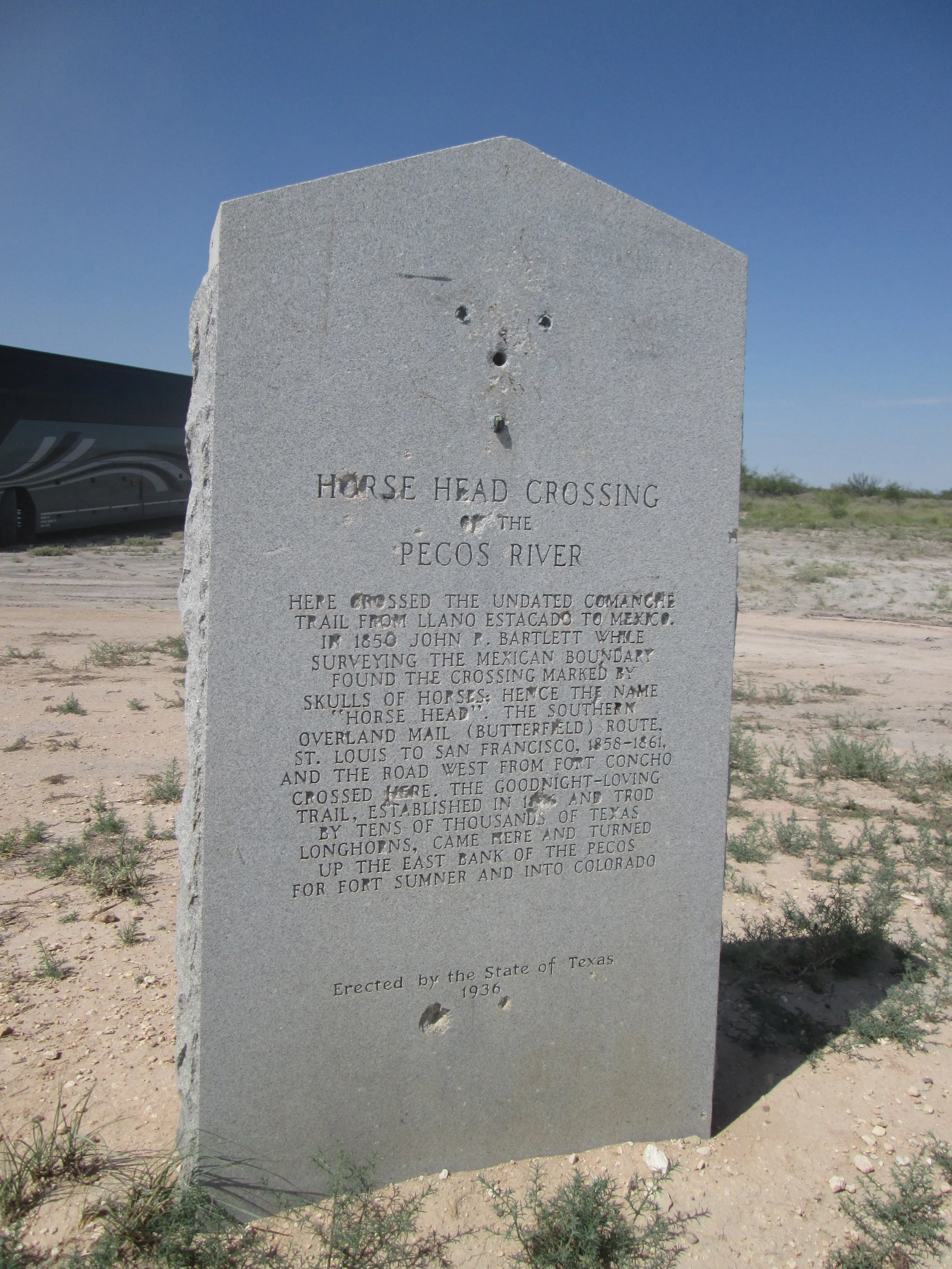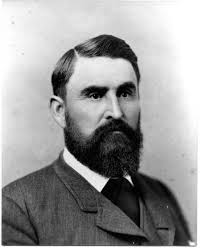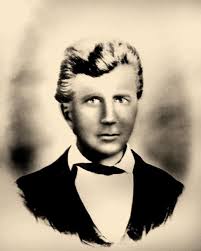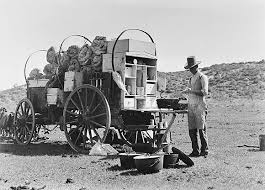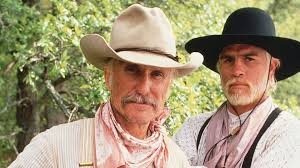Horsehead Crossing, located 40 miles south-southwest of Odessa, was a noted landmark on the Comanche War Trail, the U.S. Army Upper Road of 1849, the Butterfield Trail, and the Goodnight-Loving Trail.
The Real Lonesome Dove Was Here !
Horsehead Crossing is notable for being the spot where Charles Goodnight and Oliver Loving struck the Pecos River with their first cattle drive, a venture later memorialized in the mini-series Lonesome Dove. While many historians once believed this drive was the first of its kind, recent research published in the book Confederates and Comancheros (by Glen Sample Ely and James Bailey Blackshear) shows conclusively that in 1864 Texas cattleman John Chisum, along with William C. Franks and John Patterson delivered cattle to the Bosque Redondo Indian Reservation at Fort Sumner nearly two years before Goodnight and Loving. The drive was necessitated because the Confederacy could only pay in Confederate paper money, which was nearly worthless. The Chisum drive trailed its herd to Horsehead Crossing, then followed the Pecos River north to Fort Sumner where they were paid in gold for the beeves. Because New Mexico was under control of the Union army, a receipt for the gold payment was issued.
In 1866 Goodnight and Loving followed the same route, driving nearly 2,000 head to Fort Sumner, New Mexico to sell them to the Federal government to fill a contract for beef on the same Bosque Redondo Indian reservation. The herd hit Horsehead Crossing on, or about, July 3rd or 4th, 1866, after going nearly 80 miles without water.
Goodnight described the stretch from the Middle Concho to Horsehead without water in his biography, Charles Goodnight, Cowman and Plainsman, by J. Evetts Haley:
“This was the third day the cattle had no water, and they became crazed and almost unmanageable. As soon as they smelled the cool air, they became wild for water, and when they reached the river those behind pushed the ones in the lead right on across before they had time to stop and drink. They crossed in such volume and force that they impeded the current and the water was halfway up the bank in a perfect flood. As soon as I got them watered, I put them to grass and placed one of the best men, Charlie Wilson, in charge of them, telling him to hold them while they grazed.”
The Goodnight-Loving trail was one of the first long cattle drives to a distant market.
Besides the an early attempt at driving cattle to a distant market, Goodnight contributed another staple to cowboy culture: the chuckwagon. Built from an old ambulance, it got its first use on this cattle drive, hitting Horsehead Crossing with the herd. Goodnight added a "chuck box" to the back of the wagon, with drawers and shelves for storage space and a hinged lid to provide a flat working surface. A water barrel was also attached to the wagon and canvas was hung underneath to carry firewood. A wagon box was used to store cooking supplies and cowboys' personal items..
Accompanying them on this historic drive was an ex-Confederate soldier named Clay Allison. Allison became enamored with the Pecos River country in New Mexico and settled there. He later became a noted gunfighter, but called himself a "shootist". Clay Allison is buried in nearby Pecos, Texas (which is not in Pecos County).
(Left to Right) Charles Goodnight, Oliver Loving, a chuckwagon, Robert Duvall and Tommy Lee Jones portraying Gus McRae and Woodrow Call, characters based upon Oliver Loving and Charles Goodnight in the mini-series Lonesome Dove.
Go here for a short documentary of Goodnight and Loving and the “real” Lonesome Dove
Horsehead Crossing in 1956, when the Pecos River was flowing much stronger.
